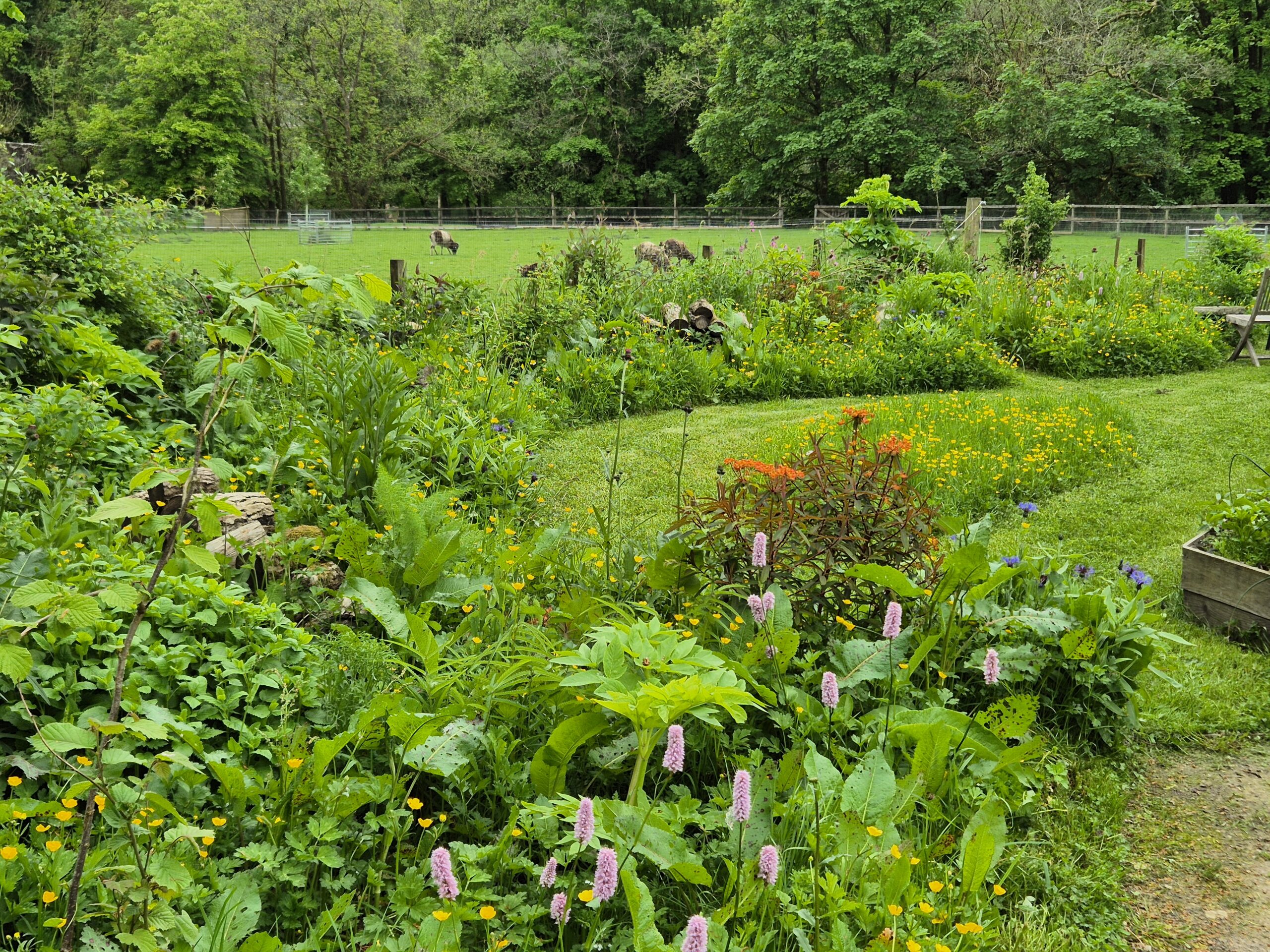


Experimenting with tough perennials
Growing perennials in grass is something I have been experimenting a lot with over the years, in my own garden and others. It’s low maintenance and if it works can be high impact.
One place I have been experimenting is in a large vegetable garden in South Ayrshire which we designed in 2021 which already has a large ornamental garden on the same site. We needed to keep the area surrounding the veg garden low maintenance while still adding some seasonal interest. Most importantly, for the customer, it needed to provide shelter and resources for wildlife, ideal for bringing in pollinators to maximise veg production.
Within the perimeter (it’s fenced in to keep the surrounding sheep out), we decided to create a wild edge. This wild edge includes a naturalistic pond and an informal ‘hedge’ filled with Crab Apples, Hawthorns, Cornus, Willows, Hazels, Sloes, Wild Cherry, Wild Honeysuckle, Dog Rose, Sweet Briar Rose, Burnet Rose, Field Rose, and Wild Clematis. We got these plants from naturescape.co.uk and were really happy with what we received. Additionally, there are log piles to give structure and habitat.
As well as an early sowing of perennial wildflower mix, the whole area is planted throughout with some tough perennials that we have found can happily compete with the grass and weeds while still providing interest and color. One thing to mention about this area is we did start with bare ground so the perennials had a slight head start on the grass re-establishing itself. I have since added more perennials into the area with some success – I add a heavy mulch around them to briefly hold down the grass.
It’s been fun to experiment with some of the really vigorous perennials, some of which aren’t really suitable for most gardens. The book ‘Dream Plants for the Natural Garden’ by Dutch Landscape Architect Piet Oudolf had been my bible at all times.
I got a lot of useful information from Noel Kingsbury’s Blog too – Noel’s Garden Blog: Growing perennials in grass (noels-garden.blogspot.com)
And James Hitchmough’s article on it was very helpful too, particularly as his research took place very near to where I am doing all my own experiments
So far the plants we have had success with are:
- Angelica archangelica
- Angelica sylvestiris ‘Vicar’s Mead’
- Achillea grandifolia
- Actaea simplex
- Anemone sylvestris
- Anthriscus sylvestris
- Aquilegia vulgaris
- Astrantia major
- Aster novae-angliae
- Aster umbellatus
- Campanula latifolia
- Centaurea montana
- Centaurea scabiosa
- Cephalaria gigantea
- Cirsium rivulare
- Digitalis
- Dispascus fullonum
- Echinops sphaerocephalus
- Eupatorium purpureum
- Euphorbia griffithii
- Foeniculum vulgare
- Geranium clarkei
- Geranium maculatum
- Geranium nodosum
- Geranium pratense
- Geranium sylvaticum ‘Baker’s Pink’
- Geum rivale
- Lamium
- Lavatera cachmiriana
- Lysimachia
- Lythrum salicaria
- Nepeta sibirica
- Origanum vulgare
- Papaver orientale
- Persicaria bistorta
- Persicaria wallichii
- Platycodon grandiflorus
- Potentilla
- Sanguisorba offcinalis
- Symphytum
- Tanacetum
- Thalictrum aquilegiifolium
Back to the blog home page

Leave a Reply